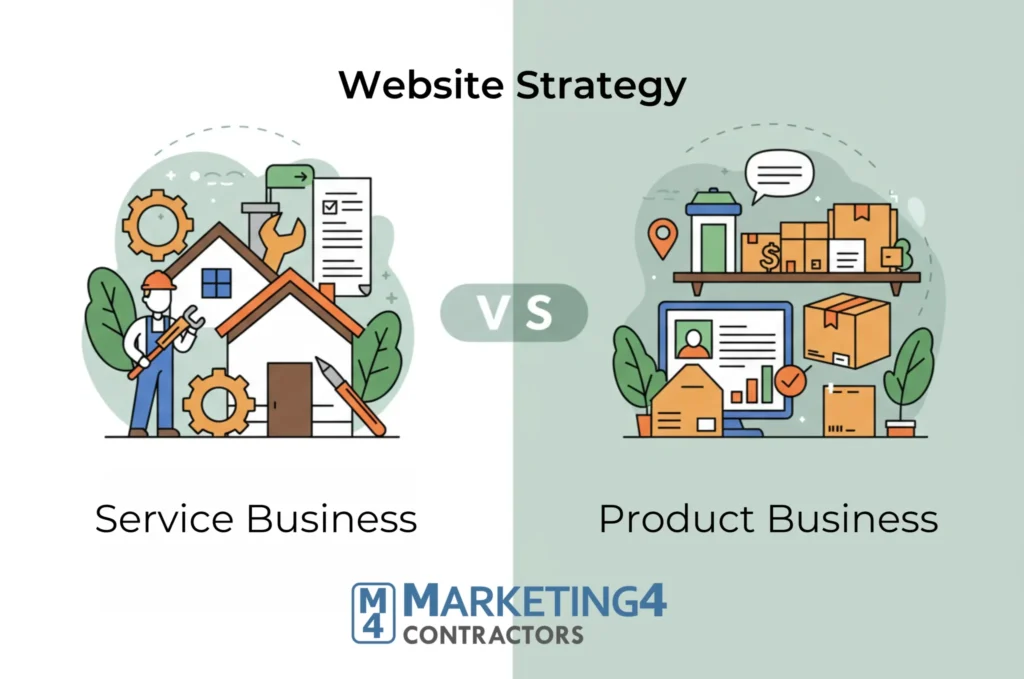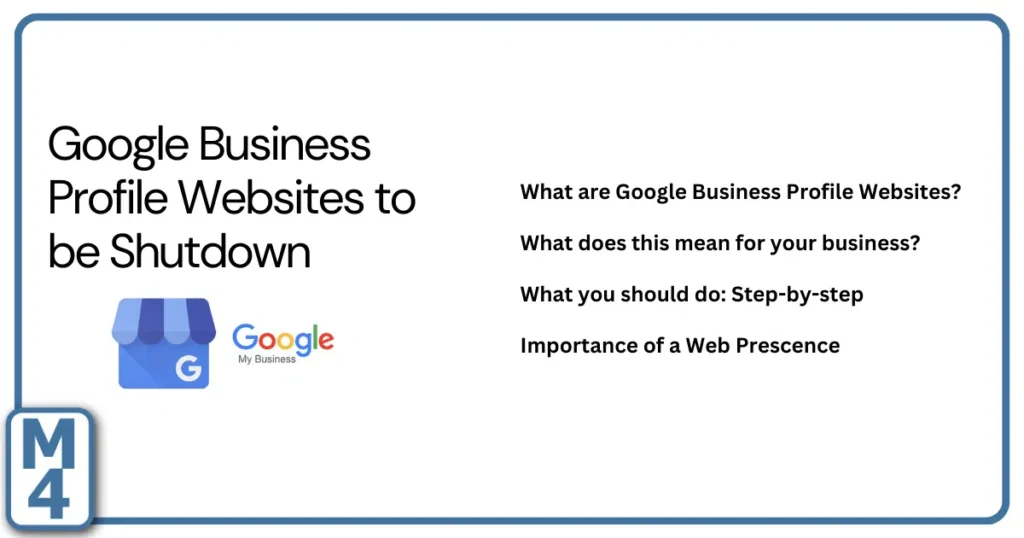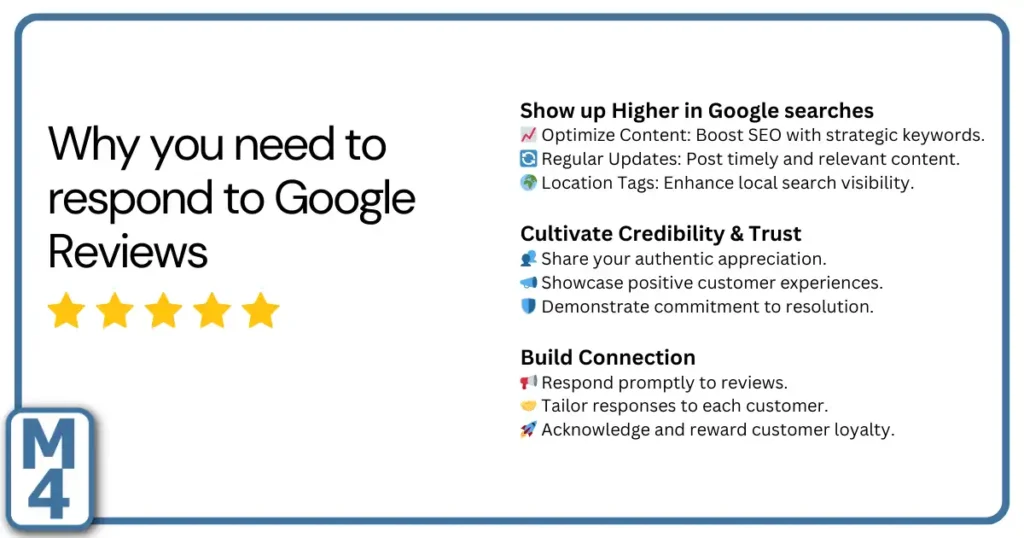How to write a blog
How do I write an effective blog for my service company?
Should I even be writing blogs for my website?
Yes. Blog articles are a crucial part to people finding your website when they search for terms like “Contractors near me” in Google Search.
If you follow the steps below you can start writing useful blogs that attract people to your website, show your expertise in your field, and keep your phone ringing with new customers.
Don’t Overthink It, Just Write It
Writing blogs can quickly seem overwhelming. Expert digital marketers and blog writers are quick to list out a bunch of technical items you MUST consider while writing a blog.
While yes, there are strategies to make your blogs more effective, the most important thing is to just start. Don’t overthink the process and just start writing blogs on topics that you are passionate about.
You can always come back to past blogs and update them as your marketing knowledge grows.
That being said, some tips in this article will discuss more technical items. However, I always try to break things down into relatable terms.
In fact, if you read nothing else use this simple list:
- Write blogs that are genuinely useful
- Choose topics that people will want to share
- Write blogs for your local audience and include names of cities or regions.
- Use headings to break up the blog into a nice structure
- Aim for roughly 1,000 words per blog
- Use images to break up the text
Why are Blogs Useful for Your Website?
Blogs are a very important element of getting you found on Google.
- They provide useful content for people who could become customers.
- Develops strong content that other websites will want to link to (local associations, business directories, etc.).
- Blogs are pieces of content that are easy to share.
- Helps you show up in Google Search Results for specific search terms or keywords.
- Shows web visitors and search engines that you have E.E.A.T. (Experience, Expertise, Authoritativeness, and Trustworthiness).
- Builds local trust and relevance for your website with search engines.
The Content
When writing content, keep it simple. Use short sentences and paragraphs that are easy to read and understand. Avoid using industry specific terms and jargon. Avoid acronyms unless you have used the full text previously with the acronym already.
Break up long paragraphs into smaller ones. Even if it’s only 1 or 2 sentences.
How long should a blog be?
A good rule of thumb is to aim for 1000 words for each blog.
If you write your blogs in a Google Doc before putting it on your website, you can see how many words you have by clicking on “Tools” then “Word Count.” If you select a bunch of text prior to this, it will show you how many words and characters are in the selected block and then the entire document.

Select Topics That Provide Value
The topics you write about should be relevant to your business, and provide value to the audience. Always write for humans first . . . but also optimize for that Google Algorithm and other search engines.
Articles should center around something that customers of your business will genuinely find interesting. This might sound counterintuitive, but DO NOT write about your business directly. People don’t want to read a 1000 word sales pitch. Select topics that are about your craft or industry, not just your business.
For example, if you are a landscaping company, you could write a blog about “5 tips to keep your lawn green this summer.” This would be genuinely useful for someone to read and it helps define you as an expert in your field. Don’t pitch your business, but instead explain how your business keeps clients lawns green.
A blog type that tends to work well for service businesses is to answer common questions. If you get the same question again and again, chances are that others are asking that question in their Google searches. Write a good blog with the answer to a question and you could be the page that people land on with then search for that question. Question and answer blogs are also a great way to get into a “featured snippet.”
Sometimes, when you ask a question into Google, it will give you an answer in a snippet and then give you a list of pages that likely have the answer. This snippet is called a ‘featured snippet’ and is a coveted place to have your website show up.
In the example below, if someone searches the question “how long does it take to build a parking structure?” They will get an answer directly from a blog on the Kiwi Newton Group website. Google has chosen them as authoritative on this matter.
Include Local Signals
As a local business, you want to attract people from your local area to read your blogs. Add city names into your blogs wherever it feels natural.
When you plan your blog list, think about how you can localize topics. Use the city name in the title. This is what people will see on a Google Search page.
For example, the blog title “10 Things to know before choosing a contractor in Toronto” is a great way to localize the blog. It will signal to Google that people in the Toronto area might want to see this blog.
It will also attract local people to click on your blog because it feels like the content is more catered to them.

Show, Don’t Tell, with Images
A blog of 1000 words can look like just a wall of text. Ain’t nobody got time for that. However, you can break up the text with images that help show the points you are trying to make. SEO guru Neil Patel suggests using an image every 150 words to break up your article. There’s no exact answer, just make sure your text is broken up nicely.
Use clear images with high resolution. Blurred images will make your content feel cheap.
Use your own images wherever you can, however you can also use websites like Pexels and Pixabay to search for high quality royalty free images that you can use in your blogs.
When writing informational posts, consider using infographics. An infographic is a visual graphic that combines pictures and brief text to make information easy to understand at a glance. The image below is an example of an infographic.
Why are infographics so useful? Because, if you create a useful infographic, other people will want to use it. Make sure you add your branding into the infographic. When someone else uses your infographic, we hope that they will link back to your blog.
A “backlink” helps your website become more authoritative in the eyes of Google.
Linking – Internal, External and Backlinks
I will have to write a whole article or series of articles on why internal links and external links are important for your website. But let’s start with what they are.
An internal link is any link on your website that leads to another page on your website. For example, you might write a blog and mention one of your services. You should then create a link from the text mentioning that service to the page on your website that talks about that service.
An external link is any link on your website that leads to another website. For example, if I reference the most used search engine I can create a link in that text that leads to Google.
The clickable text is called the “anchor text,” and it helps search engines determine that the page which the link leads to must contain information about that anchor text. So in the example above, the anchor text is “the most used search engine.”
A backlink, is a link on someone else’s website that links back to a page on your website. For the owner of that website it would be an external link. The anchor text used for that link can help search engines know what your page is about. For example, if someone were to read this blog, and love it so much that they wanted to reference on their website, I hope that they would use a sentence something like:
If you are a service based company interested in writing blogs, Marketing4 has the best blog writing guide for contractors, on their website.
The anchor text “the best blog writing guide for contractors” is essentially validating my page as the best blog writing guide. When Google crawls the page that this sentence is written on, it will help convince google of this fact. This will increase the authority of my page and my website, especially if the website that wrote this is credible and authoritative.
Backlinking is a core element of a good SEO strategy. When writing a blog, think about who might want to link to your blog. Reach out to them and see if you can get them to link to your blog from their website. If you can achieve this, your website will start to have great traffic success.
Plan Out Your Blog Topics
It is a good idea to create a plan, or at least a list of blog topic ideas that you can add to when inspiration hits.
Sometimes blogs might seem random, but a good content strategy has a specific reason for choosing blog topics. You don’t want to have too many blogs that overlap each other.
You might want to have certain blogs come out at specific times of the year. You might have several people in your company writing blogs and therefore you want to assign an author to different topics.
A good blog strategy starts with a plan.
Keep a list of planned articles
A good plan usually has a list.
At M4 we use a simple Google spreadsheet to list out planned and published blogs. This spreadsheet lists out the following:
- Topic
- Title
- Url
- Keywords
- Keyword Volume
- Audience
- Category
- Sub Category
- Status
- Author
- Doc Link

If you would like a copy of the template we use, you can save a copy in your own Google workspace by clicking here.
It is also helpful to have a template word document or Google Doc that can be used to write your blog.
For example, at M4 we like to use different colours for the different heading tags, and we use the Google Styles to set the headings. If you would like a copy of our blog template you can create a copy here.
What are heading tags you ask? Well they are an important part of blog writing. Keep reading and we’ll cover headings.
Define the Audience
Before writing a blog, it is helpful to think about “who” you are writing that article for.
Think about the type of person who would want to read this article and put yourself in their shoes. Think about the questions they might have relating to the topic and try to speak to that person.
A good marketing exercise for businesses is to define “Customer Personas.” This is where you identify personality traits, demographics, and characteristics of people who you would like to target your marketing to.
If you have customer personas already, list the personas you are speaking to in the blog.
Choosing Keywords
Write about topics people are searching for.
An important reason for writing a blog is to help you show up in Google results. When someone searches for a particular phrase, you want Google to know that you are an expert in what that person is looking for.
These search phrases are what we call “keywords” or “key phrases” and are a crucial part of Search Engine Optimization.
Keyword research involves investigating current online search trends within your industry. It essentially addresses the question: What are potential customers searching for on Google that’s directly related to my business?
Various SEO tools like Google Keyword Planner, Ahrefs, WordStream, and Moz are available to help identify your target keywords. These target keywords are the ones you aim to rank for through your blog posts.

A SEO specialist can help you generate a list of keyphrases that would be helpful to write blog posts for. They can investigate which keywords your competitors are ranking for, and estimate the monthly amount of searches for that key phrase.
Selecting the right target keyword is a skill. While a brief, commonly searched phrase (e.g., “plumbing”) is a reasonable starting point, such short keywords are widely used and can be challenging to outperform competitors in search engine results pages (SERPs).
A more strategic approach involves focusing on long-tail keywords. Long-tail keywords are extended phrases that receive fewer search queries (e.g., “plumbing companies near me” or “plumbing companies who can service my dishwasher”). Long tail keywords might have less search volume, however they will be easier to rank for, and long tail keywords tend to capture searches that have a higher intent.
In the example above the person searching for a plumber who can service their dishwasher is likely ready to hire a plumber faster than the person who is just searching for “plumber.”
It is important to note that you only want one page ranking for a specific main keyword. If you have multiple pages all trying to rank for the same keyword, then you are ‘cannibalizing’ or competing against your own content.
Choose a keyphrase per page, and then make sure the content on that page is excellent quality.
Define a Category
It is helpful to have your blogs fall into a small list of categories.
Developing this category list can also help you come up with blog ideas. On your website, you will have a specific page that will list all of your blog posts. If you have your categories set up, the visitor can filter your blogs by category to zero in on their interests.
In addition, on the individual blog page, we can automatically show other suggested articles that are filtered by the category of the blog they are reading. This will encourage the visitor to read another article that is similar to the one they are currently reading. This will keep them on your website longer, and increase your engagement rate (the average time people spend on your site). Google uses the engagement rate to determine how useful your website is for particular search terms.
Write Better Blogs Than Your Competitors
An important reason you are writing blogs is to get more traffic to your website. Unfortunately your competitors also want that traffic. Therefore you want to write the best content on a particular topic.
Go to your competitors website and see which topics they are writing about. Now, write a better blog on the topic. Let me be clear, you absolutely should NOT copy their content. Take the topic and try to write a more engaging and useful blog.
It is not okay to copy and paste the work of someone else. It’s also not okay to simply reword the work of someone else. Ethically, it is wrong. But also, it’s not going to help your website. In fact it might hurt your website. If there are two articles that are essentially the same, the older blog will likely have more authority.
Rethink the topic, and see if you can create a better blog. The goal here is to convince Google that your article is more authoritative than any other article on that topic. Then Google will start to show your article at the top of the search results.
Structure Your Article with Heading Tags
An intuitive structure for your blog will help your readers naturally flow through your content. It is also very important for search engines.
What the heck are heading tags?
Heading tags are a way to describe your blog content in a clear and structured way.
Headings are the text that would show up in a table of contents. It shows the structure of your blog in a simple way. A visitor should be able to skim your table of contents and understand the topics you will cover in that blog. Headings are typically a larger font and might be bold or underlined.
Search engines, like Google, actively “index” or “crawl” the pages on your website. Google wants to summarize the content of each page so it knows what your page is about and can direct people to your page when they search. Google uses the headings on your page to determine what important points are being discussed.
Therefore, we want to choose the headings strategically. Integrating relevant keywords into the headings helps search engines understand your content’s hierarchy.
In fact, it’s a good idea to start your blog by listing out the headings, and subheadings. Essentially, you start by writing out the table of contents for your blog and then filling in the paragraphs. This will define the structure of your article and make sure your thoughts flow intuitively. It can also help fight that pesky writer’s block.
The Hierarchy of Heading Tags
Headings and subheadings are defined by the headings tags. The hierarchy of headings are described with numbers. Therefore heading 1 is the top most heading, heading 2 is a subheading, heading 3 is a subheading and so on and so forth.
NOTE: A blog should only have one “heading 1” tag, but it can have multiple “heading 2” and “heading 3” tags.
- H1: The title of the blog
- H2: Main Point A
- H2: Main Point B
- H3: Sub-Point under Point B
- H3: Sub-Point under Point B
- H4: Sub point under the H3 heading above
- H5: Sub point under the H4 heading above
- H6: Sub point under the H5 heading above
- H5: Sub point under the H4 heading above
- H4: Sub point under the H3 heading above
- H2: Main Point C.
The most important heading tag is the “heading 1” or “h1” tag, which will be the title of your blog. You should aim for a title that is a maximum of 70 characters long.
Each subheading should be a sub point related to the heading above it.
For example, let’s say we wanted to write a blog about home renovations that increase the value of your home. We would structure the blog like this:
- H1: 5 Renovations To Increase the Value of Your Home
- H2: 1. Kitchen Upgrades
- H3: Modernizing Cabinets and Countertops
- H3: Upgrading Appliances
- H2: 2. Bathroom Remodel
- H3: Adding a Master Bathroom
- H3: Updating Fixtures and Finishes
- H2: 3. Outdoor Improvements
- H3: Landscaping and Curb Appeal
- H3: Deck or Patio Addition
- H2: 4. Basement Finishing
- H3: Creating Additional Living Space
- H3: Waterproofing and Insulation
- H2: 5. Energy-Efficient Upgrades
- H3: Installing Solar Panels
- H3: Upgrading Windows and Insulation
- H2: Conclusion
- H2: 1. Kitchen Upgrades
Notice that every H2 heading relates to the H1 heading, and every H3 heading relates to the H2 heading which it is underneath.
Other SEO Tips
Blogs have an array of advantages for helping you show up in google search results. This form of Search Engine Optimization (SEO) is a key element to an effective blogging strategy. There are few other SEO tips that we should mention.
- Create a catchy title that includes the keyword you’re looking to rank for. This signals both users and search engines that your blog post is a top match for their search.
- Create a catchy SEO title. This is the title that will show up on search engines. Remember that in search results you are competing with other websites. Make your SEO title compelling enough to click on.
- Create a compelling meta description to encourage users to click on your blog post when they see it in search results.
- Opt for concise, informative URLs. A clear URL structure (e.g., domain.com/blog/gardening-tips-for-spring/) indicates the content of your post at a glance.
- Make sure your target keyword is included in the H1 tag, reinforcing its relevance to search engines.
- Integrate your target keywords naturally into the body of your content to demonstrate its suitability for specific search queries.
- Employ internal links to connect users and search engines with related content on your website.
- Provide alt text for images to help Google index and rank images featured in your blog post.
Blog Types that would do well for Contractors
- Listicles. A listicle is a type of blog post or article that is structured in the form of a list, typically featuring a number of items or points. People are drawn to numbered lists.
- The 7 Most Common Renovation Mistakes (and How to Avoid Them)
- 5 Design Ideas for your Toronto Backyard
- Top 10 Home Improvement Projects That Boost Property Value
- Answers to Frequently asked Questions
- What, Where, When, How, Why’s
- What Permits Do You Need for Pool Installations?
- Where to Find Affordable Building Supplies in Toronto
- When to Replace Your Roof: Signs of Wear and Tear
- How to Hire the Right Contractor: Step-by-Step Guide
- Why you Should Hire Licensed Contractors
- Articles that start with “Don’t”
- Don’t Risk It: The Importance of Professional Electrical Work
- Don’t Let Your Pipes Freeze: Winter Plumbing Tips for Homeowners
- How-Tos and Guides
- How to Plan and Design a Functional Outdoor Kitchen
- How to Choose the Right Landscape Contractor
- Infographics and Simple Summaries of Research
- Blogs that other industries might want to link to.
- A realtor might want to link to a blog about “Landscaping Improvements to Increase your Curb Appeal”
- An insurance company might want to link to a blog about “Don’t Let Your Pipes Freeze: Winter Plumbing Tips for Homeowners”
- Comparison Blogs
- The difference between wood and composite decks
- Wood framing vs. Steed Studs, which is better?
- Case Studies:
- Share in-depth stories of successful projects you’ve completed. Case studies provide real-world examples of your work, showcasing your skills and the positive impact you’ve had on your clients’ properties.
- Seasonal Maintenance Guides:
- Create blog posts that guide homeowners on seasonal maintenance tasks. For instance, “Spring Maintenance Checklist: Getting Your Home Ready for the Season” can offer valuable insights into tasks like cleaning gutters, inspecting the roof, or preparing the garden.
Guides and checklists also act a great Lead Magnets. ← Internal Link 😉








